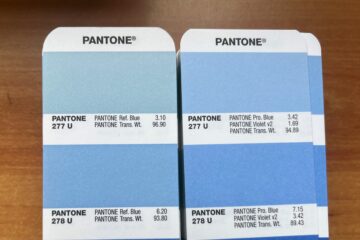Shannon Moneo
How many of you have dozens of business cards ferreted away, bundled in a desk drawer or perhaps alphabetically arranged in a small case? Do they serve a purpose? Or is a QR code preferable?
For my brother, his business cards became a totem, signposts to a rambling life, a game of cards to unravel.
When Ron died suddenly in 2013, it fell to my mother and I to clear out his belongings from where he lived in Calgary. As anyone who has had to deal with a loved ones possessions after an unexpected death, you know its a crushing job.
Ron moved around a lot, so many of his worldly goods were stowed in trunks or plastic totes. He was ever-ready to pack up for the next backbreaking job. Silver belt buckles and Carhartt gear, tattered letters and military pins, cycling gadgets and cowboy Bibles. His rented bedroom in a house in northeast Calgary was a jumble after 30 years of wandering. Sometimes items you did not want to see became apparent. Sometimes surprising pieces of a lost life emerged.
When I found my brothers trove of business cards, the 2-inch by 3.5-inch pieces of paper shed light on his travels, livelihoods and hobbies. A locked-down cellphone would provide none of that. The body of cards helped to flesh out employment records, financial documents and photographs.
These were not slick cards with stylish graphics, on high-quality paper, leather, suede or vintage cotton. Primarily white or beige, with black, blue or red lettering, the cards were unadorned and utilitarian.
There was a Claypools Saddlery Ltd. in Wainwright, Alta., declaring it the Home of the Real Cowboy. There was Gordons Cattle Hoof Trimming in Kinsella, Alta., advertising the Portable Table, a machine used to trim cattle hooves. Then, Flying Reverse D Ranch, Home of Mr. T, a prized bull, in Spiritwood, Sask., and Creekside Custom Feeders, where Backgrounding and Fattening of cattle took place in Alix, Alta.
There were many others, along the same lines, for horseshoeing, feedlots, horse/stock trailers, livestock insurance, saddlery and Western-wear enterprises. When youre a working cowboy, those are businesses that matter. Not one of the 63 cards had a cellphone number or email address and most were from rural communities. They would have been collected between the early 1990s and up to 2013. Most were well-worn, kind of like my brothers life. They revealed the difference between what matters outside a big city.
Finding the cards became a paper portal that allowed me to piece together my brothers life. I learned that Ron worked on several Alberta ranches, as a cowboy in the true meaning of the word. He toiled at Alberta feedlots and Saskatchewan slaughterhouses. He operated heavy equipment on Alberta highway projects. He was an arborist in Calgary. None of it was glamorous. It was gruelling grunt work that most often men with little education take on. Somehow those unadorned, spare cards relayed that.
Still, the tussle between maintaining old-school ways or fully adopting technology marches on. In January, 2024, an Ipsos survey showed that only 23 per cent of British adults had ever handed out a business card. Seventy-one per cent of respondents said there was no need for the cards; 9 per cent reported that its easier to connect on social media.
J. Brock Smith, a professor of entrepreneurship and marketing at the University of Victorias Gustavson School of Business, challenges the assumption that business cards are disappearing. Theres billions still handed out each year. Theyre still an important part of networking, he told me.
Thats because the main point of a card isnt to exchange information, its to make a second impression, Prof. Smith says. The first impression is when meeting someone and noticing how they look, dress and comport themselves. The second impression is the card the material, the design, the imagery which can reinforce the first impression and is a tangible expression of a persons brand. In Rons world, branding involved cattle, not people.
These days, some prefer to connect on social media, or display QR codes on their phones, which someone else can scan to get their info. Lost in translation is the individuality of the card, although these digital connections might have more permanence. Unlike my brother, who held onto his cards, it appears those small pieces of information are akin to fast fashion. The average business card is thrown away in seven days, Mr. Smith told me.
But some are keepers. In March, 2024, a 1983 Apple Computer card signed by Steve Jobs sold for US$181,183, the highest price ever for a business card. In second place was the sale of a SpaceX card signed by Elon Musk, which drew US$39,238. Its ironic that cards for two men who have rocketed our world into tech reliance top the list.
Perhaps those of us with wallet-sized pieces of paper should re-examine snippets from our lives and remember what picture the fragments resurrect. As Prof. Smith says, physical cards make it easier to retrieve information from our memories. Ron, a Prairie rover, kept his cards close to his chest. Finding them unlocked meaningful parts of his life.


